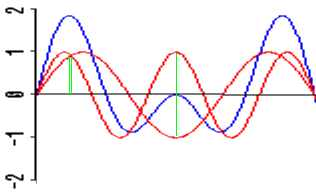INTONATION
In linguistics, intonation is variation of pitch while speaking which is not used to distinguish words. It contrasts with tone, in which pitch variation doesdistinguish words. Intonation, rhythm, and stress are the three main elements of linguistic prosody. Intonation patterns in some languages, such as Swedish and Swiss German, can lead to conspicuous fluctuations in pitch, giving speech a sing-song quality. Fluctuations in pitch either involve a rising pitch or a falling pitch. Intonation is found in every language and even in tonal languages, but the realisation and function are seemingly different. It is used in non-tonal languages to add attitudes to words (attitudinal function) and to differentiate between wh-questions, yes-no questions, declarative statements, commands, requests, etc. Intonation can also be used for discourse analysis where new information is realised by means of intonation. It can also be used for emphatic/contrastive purposes.
All languages use pitch pragmatically as intonation — for instance for emphasis, to convey surprise or irony, or to pose a question. Tonal languages such as Chinese and Hausa use pitch for distinguishing words in addition to providing intonation.
Generally speaking, the following intonations are distinguished:
- Rising Intonation means the pitch of the voice rises over time [↗];
- Falling Intonation means that the pitch falls with time [↘];
- Dipping Intonation falls and then rises [↘↗];
- Peaking Intonation rises and then falls [↗↘].
Intonation contours in English
- You're going. (statement)
- You're going? (question)
Contrastive Emphasis
- Instead of
- I want a car for my birthday. (as opposed to a bike)
- you would have to say something like:
- A car I want for my birthday.
- It's a car that I want for my birthday.
The normal intonation contours for questions in English use:
- final rising pitch for a Yes/No question
- Are you coming today?
- final falling pitch for a Wh-question
- When are you coming? Where are you going?
COMBINING WAVES
Sound is caused by small areas of high and low pressure progragating outward from the source.
One convenient way to diagram a sound wave is to graph the pressure at each point in time, the way it might be picked up by a microphone for example:
This simplest kind of pressure wave is called a sine wave. Interesting things to measure for a sine wave:
Frequency and amplitude are independent of each other. Two sine waves may have the same frequency and different amplitudes, and vice versa.
- amplitude (or loudness, size of pressure differences)
usually measured in decibels (dB)- wavelength
- frequency (or pitch)
usually measured in cycles per second, or Hertz (Hz)
Wavelength is the converse of frequency: the shorter the wavelength, the higher the frequency; the longer the wavelength, the lower the frequency. (Sound will move at the same speed, about 330 metres per second. So if you want to double the frequency of a wave, you'll have to fit twice as many wavelengths into that 330 metres, and each wavelength will have to half as long.)
Combining waves
If you're listening to waves from two sources at the same time:
You can get the overall effect by adding the waves' pressures together at each point in time. (You have to treat the normal air pressure as zero, so that a higher pressure is positive and a lower pressure is negative.)
- a high pressure from one will cancel out a low pressure from the other
- two high pressures will reinforce each other
- two low pressures will reinforce each other
The two red waves added together produce the blue wave. At the first green line, both red waves have high pressure and reinforce each other to give an extra high pressure in the blue wave. At the second green line, the two red waves have opposite pressures and cancel each other out.
The following two sounds have frequencies of 300 Hz and 500 Hz:300 Hz
500 Hz
They can be added together:
to produce a complex wave:
This is important because:
Any complex wave can be treated as a combination of simple sine waves.
We usually don't care about the actual complex wave itself. We're only interested in the frequencies and amplitudes of the simple waves that it's made up of. Two more examples:300 Hz and 2000 Hz added
900 Hz and 1100 Hz
Comparison with light
We see simple light waves (with only one frequency) as one of the colours of the rainbow. Combining together two or more simple one-frequency sine waves produces more complex colours. The more frequencies you add, the whiter the colour gets. With light, you can easily separate the frequencies by shining the complex light wave through a prism.The set of frequencies in light wave (as separated by a prism) is called its spectrum.Scientists can identify different substances by looking at the spectrum of the light the substances emit when they're heated. Iron will glow with a different set of frequencies than nickel or sulphur.The situation is similar with sound. The complex wave for an [i] will be composed of a different set of frequencies than the complex wave for [a].We need a way to separate a complex sound wave out into its component frequencies (and their amplitudes) so that we can see what makes vowels different. A spectrograph is essentially just a prism for sound.






No hay comentarios:
Publicar un comentario